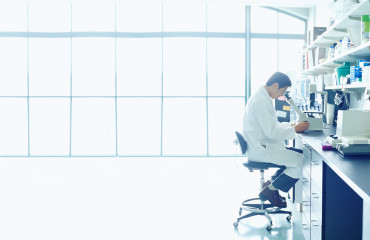Type 1 Diabetes Then & Now
in Research

Type 1 diabetes (T1D) is a life-threatening disease that poses a constant challenge, day in, day out. When you’re immersed in the daily struggle, it can be tough to tell whether things are getting better. But looking back over the past few decades, the differences in life with T1D between then and now are striking. Our understanding of the disease, how we manage it and the outlook for the future have never been better.
Insulins
Less than 50 years ago, insulins were derived from animals, and dosing was wildly inconsistent. Now, synthetic insulins with exceptional purity, standard concentration and well-defined speed and duration of activity offer the precision and flexibility to better balance blood-sugar levels.
Pumps
50 years ago, a prototype insulin pump was so large it had to be worn like a backpack. About 40 years ago, insulin pumps resembled a brick in both size and weight. Now, compact insulin pumps fit easily in a pocket—and they’ve gotten smarter too.
Sensors
Less than 20 years ago, continuous glucose monitors were available only to physicians for use in clinics. Now, personal use of this technology is recommended in diabetes clinical guidelines and covered by almost all health plans, including Medicare, the largest insurer in the United States.
Cell Replacement
Almost 30 years ago, scientists showed that a small infusion of islet cells could regulate blood-sugar levels. Now, researchers are developing renewable sources of insulin-producing cells and ways to protect them without immune suppression to make this technology available to everyone.
Beta Cell Biology
For decades, experts believed that beta cells stopped functioning altogether within a few years of T1D onset. Now, we know that limited beta cell function can persist long term in T1D and it might be possible to restore insulin production by preserving or expanding these beta cells.
Biomarkers
30 years ago, there was no way to predict whether someone would develop T1D. Now, there are markers to detect T1D and track its progression well before symptoms arise, avoiding adverse events and facilitating the search for ways to slow or stop this process.
Diabetic Eye Disease
35 years ago, the risk of vision loss from diabetic eye disease was 50 percent. Now, state-of-the-art care has cut the risk to 5 percent, and therapies to eliminate the remaining risk are in development.
This progress over the past decades paved the way for some amazing accomplishments in fiscal year 2017 and even more improvements in the near future. Find out how you can feed the momentum.